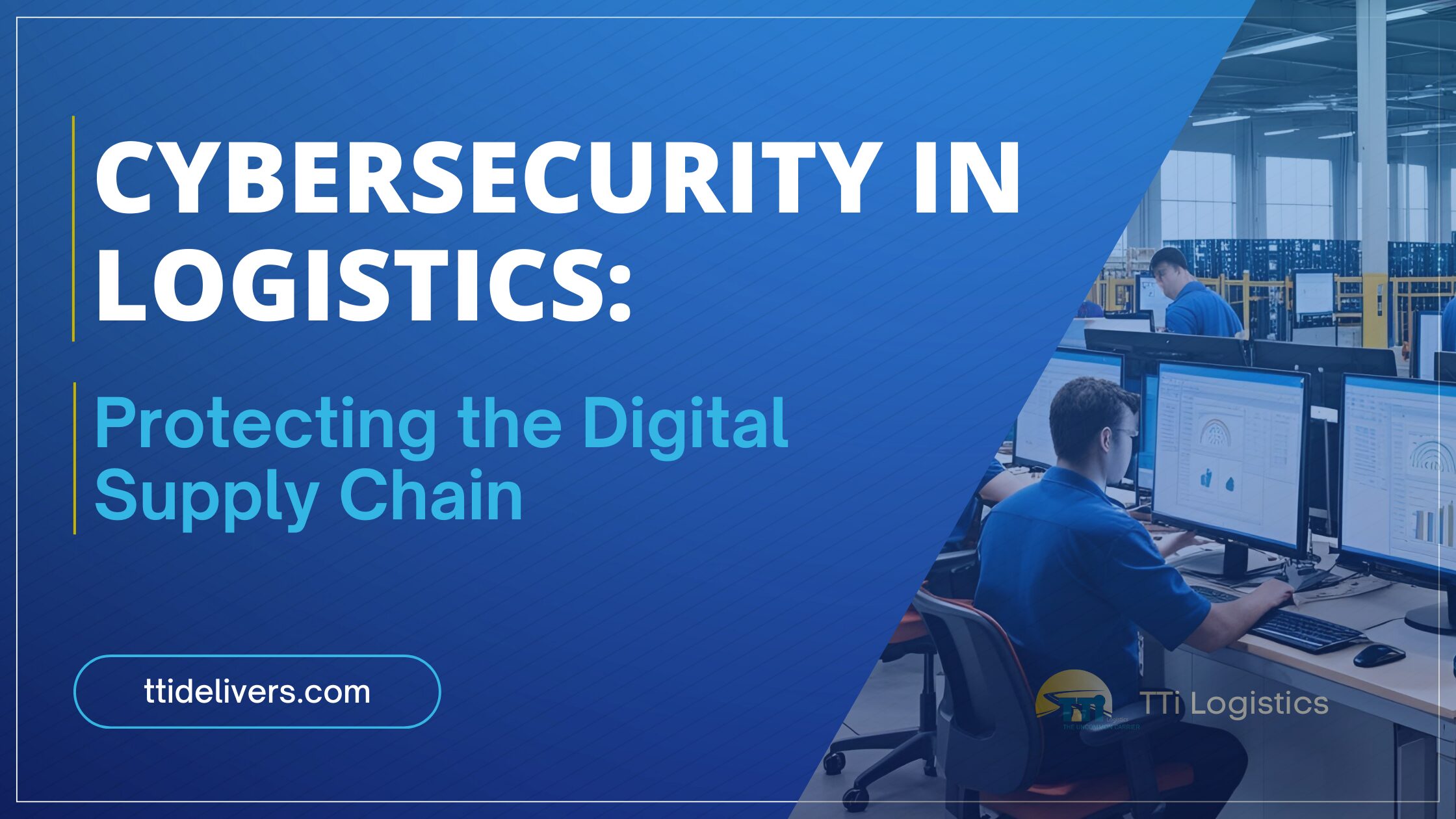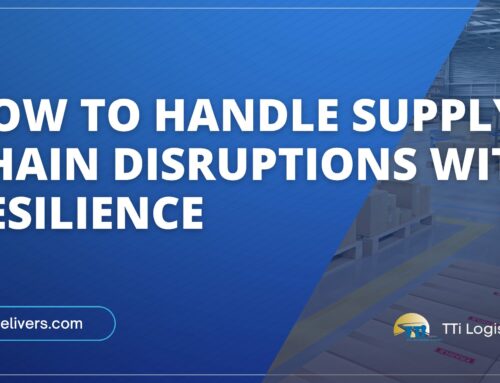Why Cybersecurity Is a Mission-Critical Priority in Logistics
As logistics becomes increasingly digital, the risk of cyberattacks is growing just as fast. Transportation management systems, real-time tracking platforms, and connected warehouse technologies are vital tools—but they also present new vulnerabilities. That’s why logistics cybersecurity is no longer a secondary concern—it’s a core business priority.
In today’s interconnected global supply chain, a single breach can halt deliveries, compromise customer data, and cost millions in recovery and lost trust. For logistics providers, protecting digital infrastructure is just as critical as moving physical goods.
In this blog, we explore the evolving threats, key vulnerabilities, and actionable strategies for strengthening logistics cybersecurity from end to end.
Why Logistics Cybersecurity Matters More Than Ever
According to a recent IBM report, the average cost of a data breach in the transportation industry is $3.59 million. As logistics platforms integrate AI, IoT, and cloud-based systems, they become more efficient—but also more exposed.
A cyberattack on a logistics network can:
- Disrupt warehouse operations
- Delay freight and last-mile deliveries
- Leak sensitive customer or vendor data
- Corrupt routing, inventory, or shipment data
- Compromise financial systems and vendor payments
Logistics cybersecurity helps prevent these threats and ensures operational continuity, customer trust, and compliance with regulations like GDPR, CCPA, and ISO/IEC 27001.
Common Cyber Threats in Logistics
Logistics providers face a wide array of cybersecurity threats. Understanding these risks is the first step to defending against them:
1. Phishing Attacks
Email-based phishing remains one of the most common threats in logistics cybersecurity. Hackers impersonate partners or vendors to steal login credentials, financial info, or sensitive data.
2. Ransomware
Ransomware attacks can lock down critical systems until a ransom is paid. In logistics, this could mean halting route planning, shipment tracking, or warehouse operations.
3. Third-Party Breaches
Vendors, carriers, and software providers connected to your system can inadvertently introduce vulnerabilities. Logistics cybersecurity strategies must include vetting and monitoring third-party partners.
4. IoT Exploits
Connected sensors, scanners, and tracking devices are convenient—but if not properly secured, they offer hackers an easy entry point into your network.
5. Data Tampering
Cybercriminals can manipulate shipment, inventory, or routing data to cause delays, losses, or fraud. Ensuring data integrity is a major component of logistics cybersecurity.
Key Vulnerabilities in the Digital Supply Chain
Digital transformation has unlocked new efficiency, but also created new attack surfaces. Key vulnerabilities include:
- Unsecured Devices: Barcode scanners, RFID tags, and mobile devices are often overlooked in cybersecurity planning.
- Outdated Software: Legacy warehouse management or transportation systems lacking current security patches are easy targets.
- Remote Work Environments: Hybrid teams and remote access increase the risk of credential theft or unauthorized access.
- Human Error: Employees clicking phishing links or using weak passwords are still among the biggest threats to logistics cybersecurity.
Addressing these vulnerabilities requires a holistic approach—not just firewalls and antivirus software.
Building a Strong Logistics Cybersecurity Framework
Protecting your logistics network starts with proactive strategy and layered defenses. A strong logistics cybersecurity framework should include:
1. Risk Assessments
Regular audits of software, hardware, and network systems help identify vulnerabilities before they are exploited.
2. Employee Training
Educating staff on phishing, password hygiene, and secure device use is essential. Training should be continuous and role-specific.
3. Access Controls
Use multi-factor authentication (MFA), role-based access, and password managers to minimize unauthorized entry points.
4. Endpoint Protection
Install and regularly update antivirus software and endpoint detection and response (EDR) tools across all devices, including mobile scanners and tablets.
5. Encrypted Communications
All data transfers between warehouses, trucks, and HQ should use end-to-end encryption to secure sensitive data.
6. Incident Response Plan
Having a documented, tested response plan in place allows companies to act fast when a threat is detected.
The Role of Third-Party Logistics Partners
If you work with 3PLs, carriers, or software vendors, they must be part of your logistics cybersecurity strategy. Vet partners for compliance with industry standards and require them to uphold strong data security practices.
Consider these questions:
- Do they use MFA and encryption?
- How do they handle incident response?
- Are they regularly audited?
- How quickly can they detect and report a breach?
Building trust and transparency into these relationships is essential for a secure supply chain.
Real-World Cybersecurity in Action
In 2020, a ransomware attack crippled the operations of a global freight forwarder, delaying thousands of shipments and forcing them to reroute traffic manually. The recovery took weeks and highlighted the need for resilient logistics cybersecurity systems.
In contrast, another logistics company implemented advanced threat detection and real-time network monitoring. When a phishing attempt targeted their routing system, the threat was neutralized within minutes, with no disruption to operations.
These examples underscore the value of preparation, monitoring, and investment in strong logistics cybersecurity practices.
Staying Ahead of the Curve
Cyber threats are evolving daily, which means logistics cybersecurity must be adaptive, proactive, and constantly evolving. Here are a few forward-looking best practices:
- Use AI for Threat Detection: Machine learning can spot anomalies in network behavior faster than traditional tools.
- Implement Zero Trust Architecture: This model assumes no user or system is trustworthy by default, reducing internal risk.
- Adopt Cloud Security Tools: As logistics operations move to the cloud, scalable security platforms offer more flexibility and automation.
- Run Regular Drills: Simulate attacks to test your incident response team and identify gaps.
Final Thoughts
The digital transformation of logistics brings massive opportunity—and equally significant risk. Logistics cybersecurity is the shield that protects data, systems, and trust in a high-speed, high-stakes industry.
At TTi Logistics, we make sure our own systems are secure to protect our clients’ products, data, and trust throughout the supply chain.
In a world where downtime is unacceptable, logistics cybersecurity isn’t a luxury—it’s a necessity.
We stay vigilant so your products and information stay protected—every step of the way.







